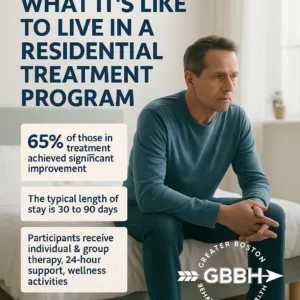I didn’t choose treatment because I felt brave. I chose it because I didn’t know what else to do.
To anyone on the outside, my life might’ve looked fine. I had been sober for a while. I showed up to work. I laughed at the right moments. But something inside me was off—quietly, persistently. I felt disconnected from everything, including myself.
When I checked into a residential treatment program in Boston, MA, it wasn’t a grand moment of surrender. It was more like a quiet collapse. I just couldn’t keep pretending I was okay.
It’s Not What You Think It Will Be
I had so many assumptions about what residential treatment would be like. I pictured sterile hallways, forced group hugs, someone watching me every second. What I found was… different.
It was structured, yes. Strict in ways that initially felt like overkill—no cell phones, no sugar, scheduled everything. But that structure became something I didn’t realize I needed. When the rest of your life has been chaos, predictability can feel like a kind of safety.
The staff weren’t robots. They weren’t there to fix me. They were just steady. Sometimes that meant challenging me in ways I hated. Other times it meant holding space while I cried in a room full of strangers. Either way, they showed up.
You’re Going to Break—In a Good Way
In those first few days, I kept telling myself I didn’t belong there. That I wasn’t “as bad” as some of the others. Classic deflection. But pain isn’t a competition. Everyone there had their version of stuckness.
For me, the hardest part wasn’t the groups or the rules. It was sitting still long enough to feel again. I had gotten good at performing wellness—saying the right things, nodding in therapy, playing the part of the “grateful alum.” But treatment stripped that away.
There was a moment, maybe a week in, where I finally let the guard down. I was in group, someone else was sharing about their anger, and I realized I hadn’t let myself feel anger in years. Grief? Sure. Shame? Constantly. But anger? That was unsafe. That was a threat. And yet, in that room, it was just… human.
Something broke open in me that day. Not all at once. But enough to see that maybe I didn’t come here to fix the past—I came to finally face it.
Healing Doesn’t Happen on a Schedule
Here’s what no one tells you: you won’t have a Hollywood moment of transformation. It’s not one breakthrough and then clarity forever.
Healing looks more like this:
- One day you speak up in group for the first time.
- The next day you shut down and don’t talk at all.
- You feel hopeful. Then tired. Then confused. Then okay again.
There’s no linear path. But the people around you help you keep going. The community inside a residential treatment program is unlike anything else. You eat meals together, sit in silence together, celebrate tiny wins together. It’s raw. And because it’s raw, it’s real.
One night, a woman I barely knew handed me a cup of tea after I had a panic attack during art group. No words. Just presence. That moment stayed with me longer than most therapy sessions.

You Think Discharge Will Be the End. It’s Not.
The day I left was harder than I expected. I thought I’d be relieved. I was—but I was also scared.
Residential treatment had become a kind of cocoon. Outside those walls, everything moved faster. People didn’t pause before reacting. I had to remind myself that the tools I learned weren’t just for that building. They were for life.
And life wasn’t going to wait for me to feel ready.
There were stumbles after I left. I ghosted my aftercare therapist for a week. I skipped support group once, then twice. But I came back. Because what I learned in residential wasn’t how to be perfect. It was how to return to myself when I felt lost.
If You’re Considering It (Even a Little)
Here’s the truth: most people don’t feel ready when they check into a residential treatment program. You wait for a sign, a crash, some clarity that might never come.
But sometimes, just being tired of your own patterns is enough. Sometimes “I can’t keep doing this” is the only clarity you need.
If you’re in the Boston area and Greater Boston Behavioral Health is on your radar—don’t wait for things to fall apart completely. Whether you’re brand new to treatment or an alum who needs to reconnect, it’s okay to need help again.
That’s not failure. That’s healing.
FAQ: Residential Treatment Programs at Greater Boston Behavioral Health
What is a residential treatment program, exactly?
It’s a live-in mental health program where you stay on site, away from daily distractions and stressors. It offers 24/7 support, structured therapy, and time to focus entirely on your mental wellness.
How long do people usually stay?
Lengths vary, but most programs run anywhere from 30 to 90 days. Some stay longer based on clinical needs or personal readiness to transition.
Can I bring my phone or laptop?
Typically, personal devices are not allowed during the early phase. This helps you unplug and focus. Some programs allow phone use during scheduled times later on.
What happens after I leave?
You’ll work with staff to build a discharge plan, which may include outpatient therapy, support groups, and continued contact with your treatment team.
Is it only for people who’ve hit “rock bottom”?
No. You don’t have to be in crisis to benefit. Many people enter residential treatment when they feel emotionally stuck, disconnected, or overwhelmed.
Ready to Talk?
Whether you’re returning after a break or thinking about treatment for the first time in years, you’re allowed to need more support. Contact Greater Boston Behavioral Health or call at 888.301.8072 to learn more about our residential treatment program in Boston, MA. We’re here—steady, ready, and real.

